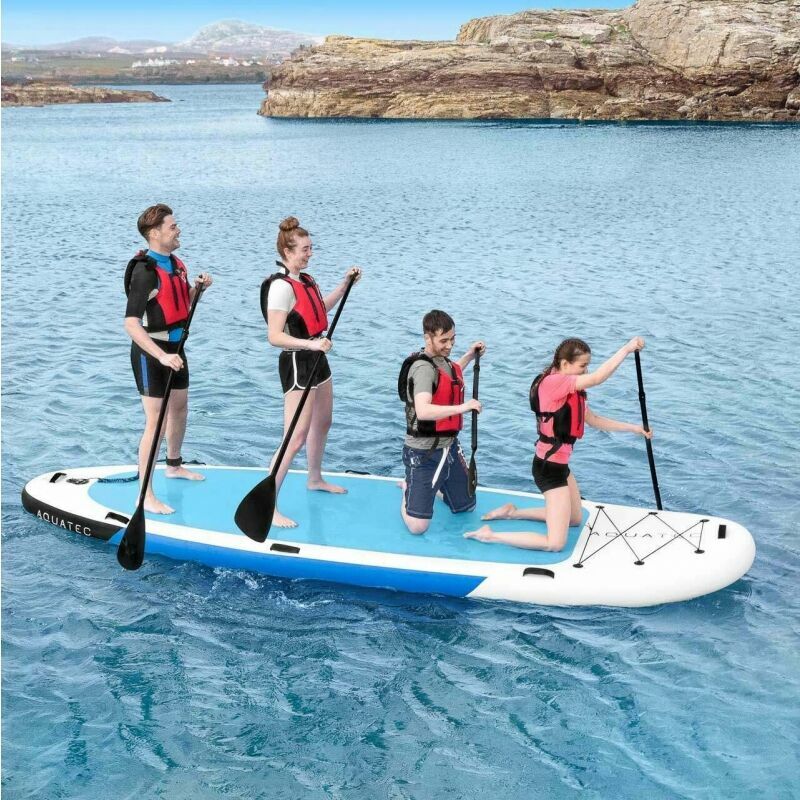
Paddle boarding is an exciting water sport that has been gaining popularity in recent years. Not only is it a great way to stay active and enjoy the outdoors, but it also offers a unique way to explore the water and get up close and personal with nature. However, one of the most important decisions that you will need to make before getting started with paddleboarding is choosing the right paddleboard.
There are many different factors that you should consider when selecting a paddleboard, including your experience level, intended use, size and weight, and budget. In this article, we will walk you through the key considerations that you should keep in mind when selecting the perfect paddle board for your needs.
Experience Level
The first factor that you should consider when choosing a paddleboard is your experience level. If you are a beginner, you will want to choose a board that is stable, easy to maneuver, and forgiving. Look for a board that is at least 10 feet long and 32 inches wide, as this will provide the stability that you need to get started. Additionally, you may want to consider a board with a rounded nose and tail, as this will make it easier to turn and maneuver on the water.
If you have some experience with paddleboarding, you may be looking for a board that can help you improve your skills and take your paddling to the next level. In this case, you may want to look for a board that is slightly narrower and longer than a beginner board, as this will provide more speed and maneuverability. Look for a board that is around 10-11 feet long and 30-32 inches wide.
For experienced paddleboarders who are looking to take on more challenging conditions, such as waves or whitewater, a shorter and more maneuverable board may be more appropriate. Look for a board that is around 8-9 feet long and 28-30 inches wide, as this will provide the agility and responsiveness needed to navigate rough waters.
Intended Use
Another important factor to consider when choosing a paddleboard is your intended use. Different types of paddleboards are designed for different activities, such as touring, racing, surfing, and yoga. Consider what activities you plan to use your paddleboard for before making a purchase. Look for a board that is longer and narrower than a beginner board, as this will provide greater speed and efficiency on the water. Additionally, you may want to look for a board that has a displacement hull, as this will help you cut through the water more easily.
If you plan to use your paddleboard for surfing, you will want to choose a board that is shorter and more maneuverable than a touring board. Look for a board that has a pointed nose and tail, as this will help you catch waves and turn more easily. Additionally, you may want to look for a board that has a rocker, as this will help you ride waves more smoothly.
If you plan to use your paddleboard for yoga or fitness, you will want to choose a board that is wide and stable. Look for a board that is at least 32 inches wide, as this will provide the stability that you need to perform yoga poses and other exercises on the water. Additionally, you may want to look for a board that has a non-slip deck, as this will provide extra grip and prevent slipping.
Size and Weight
The size and weight of your paddleboard are also important considerations when making a purchase. Look for a board that is appropriate for your size and weight, as this will ensure that you have the necessary stability and buoyancy on the water.
If you are taller or heavier, you may want to choose a board that is longer and wider than average, as this will provide greater stability and buoyancy. Additionally, you may want to look for a board that has a higher weight capacity, as this will ensure that you can safely and comfortably carry any necessary gear or supplies.
Budget
Finally, your budget is an important consideration when choosing a paddleboard. Paddleboards can range in price from a few hundred dollars to several thousand dollars, depending on the quality, materials, and features.
While it may be tempting to choose the cheapest paddleboard that you can find, keep in mind that quality and durability are important considerations. Additionally, consider the features that are important to you, such as fins, paddles, and deck pads. While these features may increase the cost of your paddleboard, they can also enhance your paddling experience and make it more enjoyable and comfortable.

